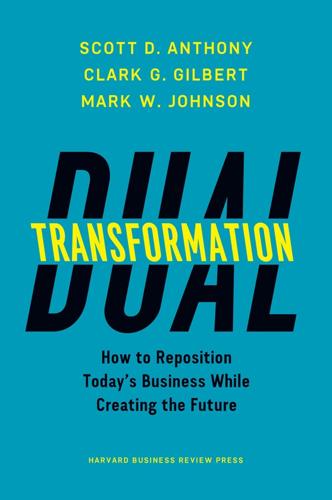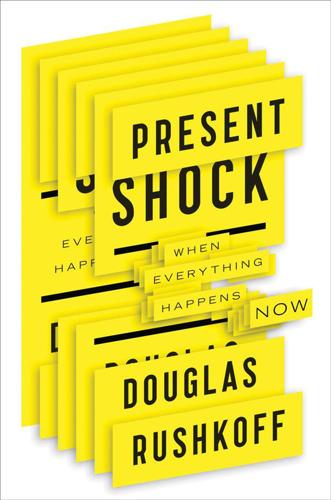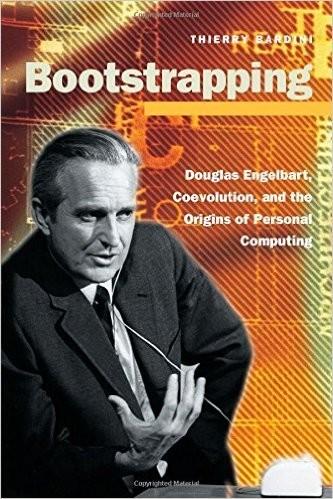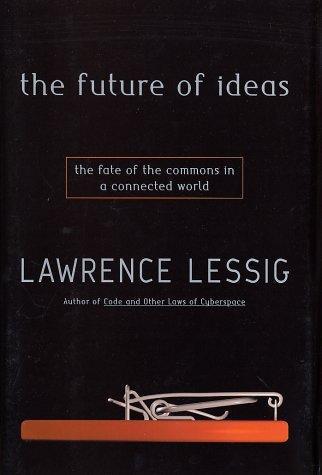
Dual Transformation: How to Reposition Today's Business While Creating the Future
by
Scott D. Anthony
and
Mark W. Johnson
Published 27 Mar 2017
An even more important event took place later that same year when Marc Andreessen and his team introduced a beta version of the Netscape browser. Since the late 1960s, academics and defense officials had been experimenting with using a distributed network of computer connections to communicate and collaborate. The Netscape browser—coupled with Tim Berners-Lee’s invention of HyperText Markup Language (HTML) universal resource locators (URLs), along with a range of complementary innovations—allowed even the layperson to ride the so-called information superhighway. The disruptive effects of this internet-enabling technology reshaped the media business. The first to feel its effects were newspapers.

Present Shock: When Everything Happens Now
by
Douglas Rushkoff
Published 21 Mar 2013
The end of the twentieth century certainly gave us enough momentum, pull, and tension. Maybe too much. Back in the quaint midcentury year of 1965, Mary Poppins was awarded five Oscars, the Grateful Dead played their first concert, and I Dream of Jeannie premiered on NBC. But it was also the year of the first spacewalk, the invention of hypertext, and the first successful use of the human respirator. These events and inventions, and others, were promising so much change, so fast, that Alvin Toffler was motivated to write his seminal essay “The Future as a Way of Life,” in which he coined the term “future shock”: We can anticipate volcanic dislocations, twists and reversals, not merely in our social structure, but also in our hierarchy of values and in the way individuals perceive and conceive reality.

Bootstrapping: Douglas Engelbart, Coevolution, and the Origins of Personal Computing (Writing Science)
by
Thierry Bardini
Published 1 Dec 2000
"Continuous use of NLS to store ideas, study them, relate them structurally, and cross-reference them results in a superior organization of ideas and a greater ability to manipulate them further for spe- cial purposes, as the need arises-whether the 'ideas' are expressed as natural language, as data, as programming, or as graphic information" (Engelbart et al. 1970, 184). The emphasis once again was on relations, on structure, as SRI and the oN-LIne System 135 , '" Figure 5-2. The Herman Miller NLS Console. Source: Engelbart et al. (1970), p. 137. in Bateson's formulation of what you see when you look at your hand. And the result was the invention of hypertext, linked relations between texts. A "text" (or a "file") simply is any structured set of character strings (or "statements"). All text handled in NLS was in "structured-statement" form, a hierarchical arrangement of these character strings resembling a conventional outline. Each statement possessed identifying features such as a "number" (po- sition and level in the structure) and a "signature," a line of text giving the ini- tials of the user who created the statement and the time and date when it was done.

The Future of Ideas: The Fate of the Commons in a Connected World
by
Lawrence Lessig
Published 14 Jul 2001
And by 1999, many were beginning to be approved in a way that surprised the industry. Applications for computer-related business methods jumped from about 1,000 in 1997 to over 2,500 in 1999.88 High on that list was the Amazon 1-Click patent, but also on the list were Price-line.com's reverse auction patent, and British Telecom's claim that it owned the invention of hypertext links (and hence the World Wide Web!).89 In all these cases, the question the monopoly-granting body asked was simply this: Was this sort of “invention” sufficiently like others that were the subject of patents? If so, then the patent was granted for this field of innovation. Economists, however, are likely to ask a much different question.